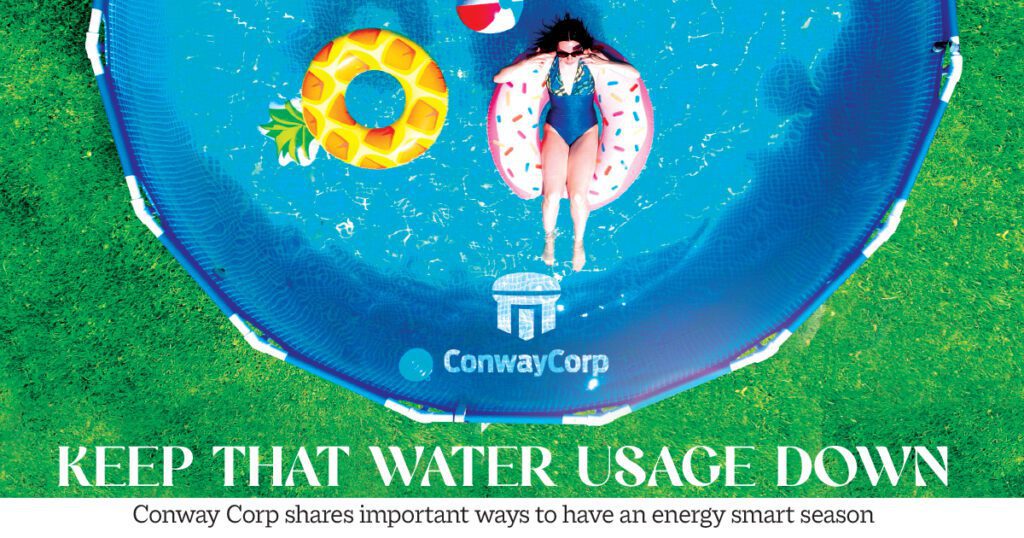30 Jun 2024 Keep that water usage down
By Beth Jimmerson
As temperatures rise during the summer months, our consumption of water also increases. We participate in outdoor activities like swimming and gardening and use nearly four times as much water as the rest of the year to keep our lawns green or fill our backyard pools.

Some homes can even use up to 3,000 gallons of water on a peak day, which is the equivalent of leaving a garden hose running for nearly eight hours. The good news is with a few simple techniques, you can save water and money all summer long while still enjoying your favorite outdoor activities.
Landscaping
Now is a great time to determine which area of your yard needs the most water and to prioritize the watering needs of outdoor plants and trees. Newly planted trees, shrubs and lawns should receive the first priority when it comes to determining the need for water. While most plants and bushes are not planted until spring, even those planted the previous year may not have had time to develop extensive root systems. It’s best to water early in the morning when temperatures and wind speed are the lowest to reduce loss from evaporation. Mulching also reduces loss and keeps the soil and roots cool. Remember a slow trickle from the hose is the most effective method for absorption.
Flower and Vegetable Gardens
Most flower and vegetable gardens require watering to stay productive. Mulching can help retain additional moisture in the soil and around the roots. Well-established trees and shrubs can withstand a prolonged period without rain or watering. Far more plants die from over-watering than under-watering. For many garden plants, the best way is to let your finger be the guide. Dig down several inches near the base of the plant. If the soil is dry, that’s an indication you need to water.
Lawns
Don’t over-water your lawn. As a general rule, lawns only need one inch of water every five to seven days. Try placing a small empty tuna can near your sprinkler system to help you determine when to turn off the sprinkler. When the can is full, you have watered approximately one inch. Water lawns during the early morning hours when temperatures and wind speeds are lowest to reduce loss from evaporation. Try setting your lawn mower blades one notch higher, because longer grass means less water evaporation.
Rain Barrels
Place rain barrels or buckets beneath your gutters or downspouts. For every 1,000 square feet of roof surface, you will collect 420 gallons of water during every inch of rainfall. You can use the rainwater for outdoor plants and trees or to wash your car. Channel storm water across lawns and into garden beds away from your house. Consider rainscaping by establishing a watershed-friendly garden, which will use stormwater to thrive and create beauty around your home.
Swimming Pools
Uncovered backyard pools lose hundreds of gallons of water each month from evaporation. Using a pool cover and keeping it covered when not in use will reduce the evaporation of water and chemicals by nearly 70 percent. Check your pool for leaks often, and always consult a professional with pool maintenance to reduce your risk of structural failure like a cracked shell that would waste thousands of gallons of water over the summer.
We all see our water use rise during the summer, but our monthly statements don’t have to rise too. Start planning now to use water more efficiently, and your entire family will be having fun in the sun all summer long.
- This winter, keep the warm in and the chill out - December 2, 2025
- Let’s talk turkey - November 4, 2025
- The benefits of public power - September 30, 2025








